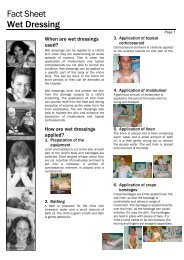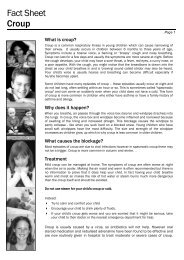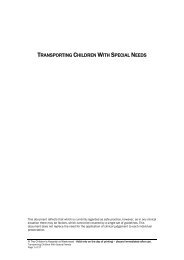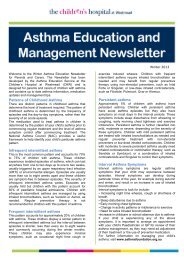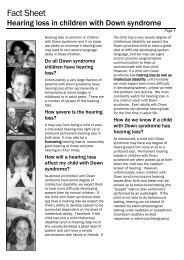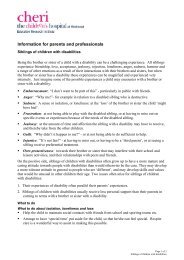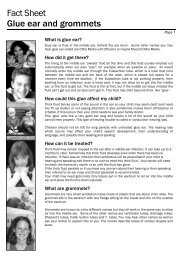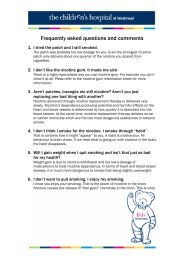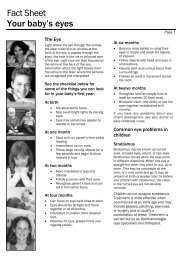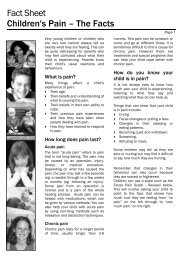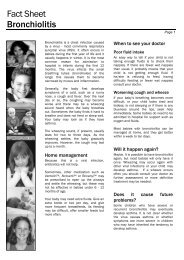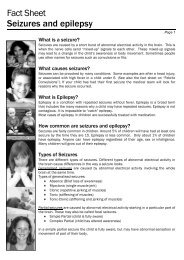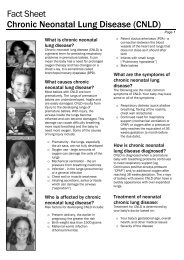Fact Sheet Poisonous Or Harmful Plants - Kids Health @ CHW
Fact Sheet Poisonous Or Harmful Plants - Kids Health @ CHW
Fact Sheet Poisonous Or Harmful Plants - Kids Health @ CHW
Create successful ePaper yourself
Turn your PDF publications into a flip-book with our unique Google optimized e-Paper software.
<strong>Fact</strong> <strong>Sheet</strong><br />
<strong>Poisonous</strong> or harmful plants<br />
Cycads<br />
The seeds are bright red and yellow and look<br />
appealing but are poisonous and should not be eaten.<br />
When used as bush tucker, the seed is carefully<br />
leached of toxins before they are ground into flour.<br />
Oleander (Nerium oleander)<br />
All parts are poisonous but taste awful. Growing<br />
them as standards keeps the leaves and<br />
flowers out of reach of children. Always wash<br />
your hands after pruning oleanders as the sap<br />
can irritate the skin and eyes.<br />
Rhubarb leaves<br />
Grevilleas (especially ‘Robyn Gordon’)<br />
Page 4<br />
Grevilleas can cause dermatitis but are rarely<br />
dangerous unless they are being pruned or propagated<br />
by cutting. Wear gloves to reduce contact.<br />
Poinsettia<br />
The sap is an irritant, so handle plants with care. The leaves<br />
and seeds can cause delirium if eaten.<br />
The stalks are edible but the leaves contain a toxin. Don’t eat the leaves and don’t feed<br />
leaves to chooks or pet birds.



